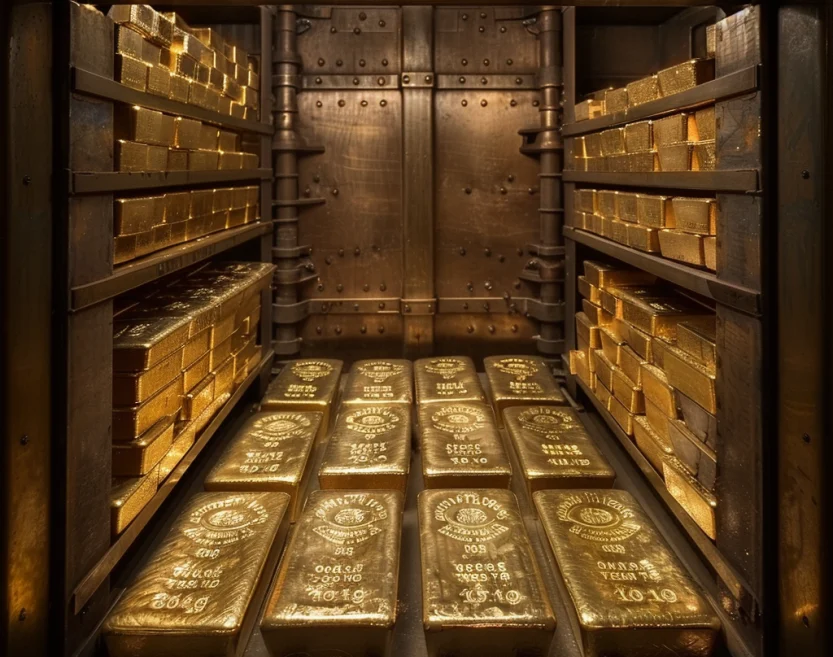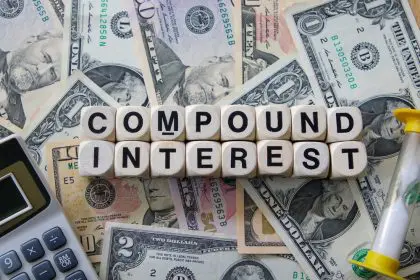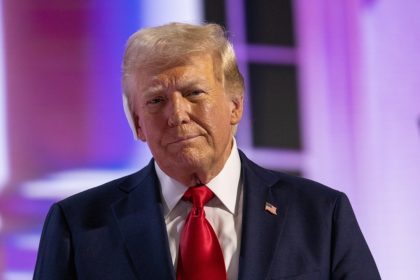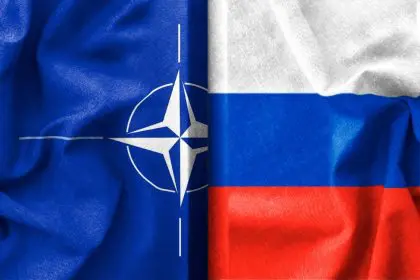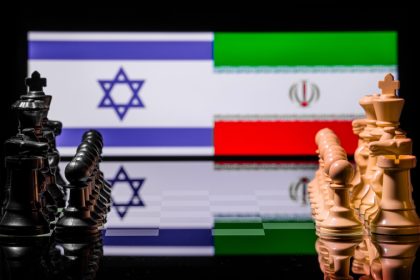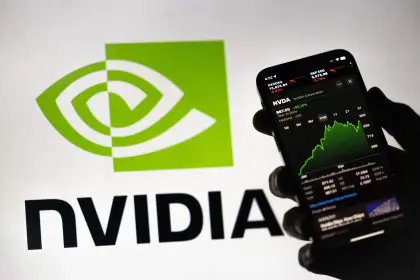When the world starts feeling dangerous, humans revert to their most primitive financial instinct: hoarding precious metals like our ancestors hoarded grain during famines. Gold has once again become the ultimate “oh no” investment as geopolitical tensions transform rational investors into modern-day dragons protecting their treasure hoards.
The Middle East conflict escalation between Israel and Iran has triggered the same flight-to-safety response that has driven gold demand for thousands of years. When missiles start flying and diplomats start shouting, portfolio managers start buying gold like it’s the last lifeboat on a sinking ship.
This isn’t just about one regional conflict anymore. Gold’s recent surge to over $2,500 per ounce reflects a broader anxiety about global stability that goes beyond any single crisis. Investors are essentially paying premium prices for the psychological comfort of owning something that has retained value through every war, depression, and political upheaval in human history.
Fear is the world’s strongest investment motivator
Geopolitical tensions create immediate demand for assets that don’t depend on any government’s stability or economic policies for their value. When Iran and Israel escalate their conflict, investors don’t just worry about those specific countries—they worry about oil supplies, regional wars, nuclear weapons, and global economic disruption.
Gold buying during crisis periods isn’t rational in the traditional sense. It’s emotional insurance against scenarios that most people hope will never happen but can’t stop imagining. The $1.2 billion in gold ETF inflows over five trading days represents millions of people simultaneously deciding they’d rather own metal than trust paper currencies.
The psychology behind crisis gold buying taps into deep human survival instincts that view precious metals as permanent stores of value that will retain worth regardless of which governments collapse or which currencies become worthless. This psychological appeal often trumps economic analysis during periods of high anxiety.
Regional conflicts like the Israel-Iran situation create ripple effects that extend far beyond the immediate participants. Energy markets, shipping routes, military alliances, and global supply chains all become vulnerable, creating uncertainty that makes gold’s stability more appealing than growth investments.
The speed at which gold prices respond to geopolitical news reflects how quickly fear can override other investment considerations. When tensions escalate, gold buying often happens within hours rather than days, creating price spikes that feed on their own momentum.
Economic optimism is fighting against panic buying
The contradiction between strong U.S. economic data and surging gold demand illustrates the complex dynamics driving precious metals markets. Unemployment at 3.4%, rising consumer confidence, and strong retail sales should theoretically reduce demand for safe-haven assets, but geopolitical fear is proving stronger than economic optimism.
U.S.-China trade progress represents the type of positive development that usually dampens gold demand by reducing global uncertainty. When major economies appear to be resolving disputes peacefully, investors typically shift from defensive assets toward growth opportunities that offer better returns.
The resilient U.S. economy creates a challenging environment for gold because strong economic performance supports higher interest rates, which make non-yielding assets like gold less attractive compared to bonds and savings accounts that pay actual returns.
Consumer confidence hitting post-pandemic highs suggests that Americans feel secure about their economic prospects, which should reduce demand for crisis hedges. However, domestic economic confidence doesn’t necessarily translate to reduced anxiety about international conflicts and global stability.
The tension between positive economic indicators and geopolitical anxiety creates volatility in gold markets as investors struggle to balance fear-driven safe-haven demand against the opportunity costs of holding non-productive assets during periods of economic growth.
Federal Reserve policy creates gold’s biggest headache
Rising interest rates represent gold’s natural enemy because precious metals don’t pay dividends, interest, or any other form of return while you hold them. When bonds and savings accounts offer attractive yields, gold’s appeal diminishes significantly for investors seeking income-producing assets.
The Federal Reserve’s potential for additional rate hikes based on strong economic data poses a direct threat to gold’s current rally. Higher rates increase the opportunity cost of holding gold while making dollar-denominated investments more attractive to international buyers.
Dollar strength, which typically accompanies Fed rate increases, makes gold more expensive for foreign buyers and reduces international demand. Since gold is priced in dollars globally, currency strength can significantly impact international purchasing power and demand patterns.
Bond yields rising in response to Fed policy create direct competition for gold as a safe-haven asset. When Treasury bonds offer decent returns with government backing, the appeal of zero-yielding gold diminishes for many conservative investors seeking security.
The timing of Fed policy decisions relative to geopolitical events creates complex market dynamics where monetary policy battles against crisis psychology for influence over gold prices. This creates volatility as markets try to price in both economic optimism and geopolitical fear simultaneously.
The technical setup reveals investor psychology
Gold’s breach of $2,500 per ounce represents more than just a price milestone—it signals that fear-driven buying has overwhelmed technical resistance levels that might have contained price increases under normal circumstances. This breakout suggests that psychological factors are dominating traditional market analysis.
The rapid move from $2,470 to over $2,510 and back down illustrates the volatile nature of crisis-driven gold buying, where prices can spike dramatically on fear and then retreat just as quickly when tensions ease or other factors intervene.
ETF inflows of over $1.2 billion in five trading sessions represent institutional and retail investors simultaneously reaching the same conclusion about portfolio protection. This concentrated buying creates momentum that can drive prices beyond levels justified by fundamental analysis alone.
The clustering of gold purchases during specific geopolitical events shows how modern markets can amplify traditional safe-haven demand through electronic trading platforms and financial instruments that didn’t exist during previous crisis periods.
Technical analysis becomes less reliable during crisis periods because emotional buying can override normal support and resistance levels. When fear dominates markets, traditional chart patterns often fail to predict price movements accurately.
Global supply chains amplify every crisis
Modern economic interconnectedness means that regional conflicts can disrupt global commerce in ways that make gold more appealing as a hedge against supply chain disruptions. The Middle East’s role in global energy markets makes any conflict there a potential threat to worldwide economic stability.
Oil price volatility triggered by geopolitical tensions creates inflationary pressures that make gold attractive as a hedge against currency devaluation and rising costs. When energy prices spike, investors often seek assets that historically maintain purchasing power during inflationary periods.
Shipping route vulnerabilities through regions like the Strait of Hormuz and Suez Canal create immediate economic consequences that extend far beyond the specific countries involved in conflicts. These chokepoints make regional tensions global economic concerns.
Supply chain disruptions from geopolitical conflicts can trigger shortages and price increases across multiple industries, creating economic uncertainty that makes non-correlated assets like gold more appealing for portfolio diversification.
The speed at which regional conflicts can affect global markets through digital communication and electronic trading creates rapid transmission of fear and uncertainty that can drive precious metals demand within hours of news events.
The investment dilemma nobody wants to face
Investors buying gold at current levels face the uncomfortable reality that they’re essentially paying premium prices for insurance against disasters they hope won’t happen. This creates a psychological conflict between wanting protection and hoping that protection becomes unnecessary.
The potential for gold to reach $2,600 if tensions worsen creates FOMO among investors who worry about missing crisis-driven rallies, while the possibility of retreat to $2,300 if conditions improve creates anxiety about paying peak prices for temporary fear.
Portfolio allocation decisions around gold require balancing the psychological comfort of crisis protection against the opportunity costs of holding non-productive assets during periods when other investments might generate better returns.
The timing challenge of gold investment during crisis periods involves trying to predict whether current tensions represent the beginning of larger problems or temporary disruptions that will resolve without major economic consequences.
Long-term gold holding requires accepting that most of the time, the insurance won’t be needed, but when it is needed, it might be the difference between portfolio preservation and significant losses. This creates a decision-making challenge that goes beyond traditional investment analysis.
The current gold market reflects humanity’s eternal struggle between optimism and pessimism, between believing that problems will be solved and preparing for the possibility that they won’t. In uncertain times, many investors choose to pay the premium for peace of mind, regardless of what economic indicators suggest about rational portfolio allocation.

